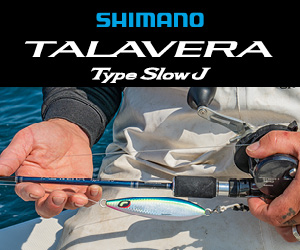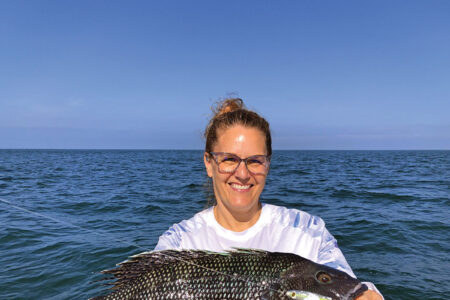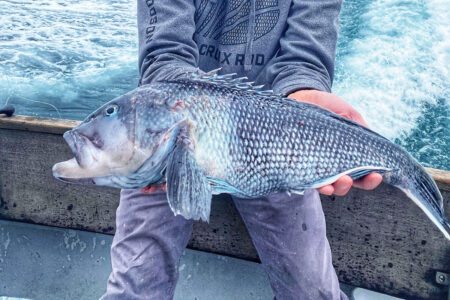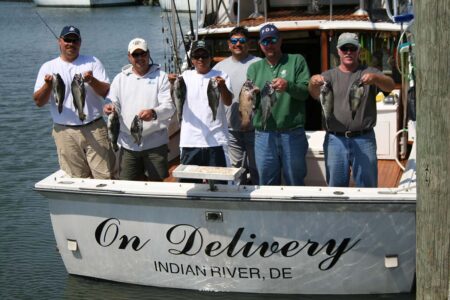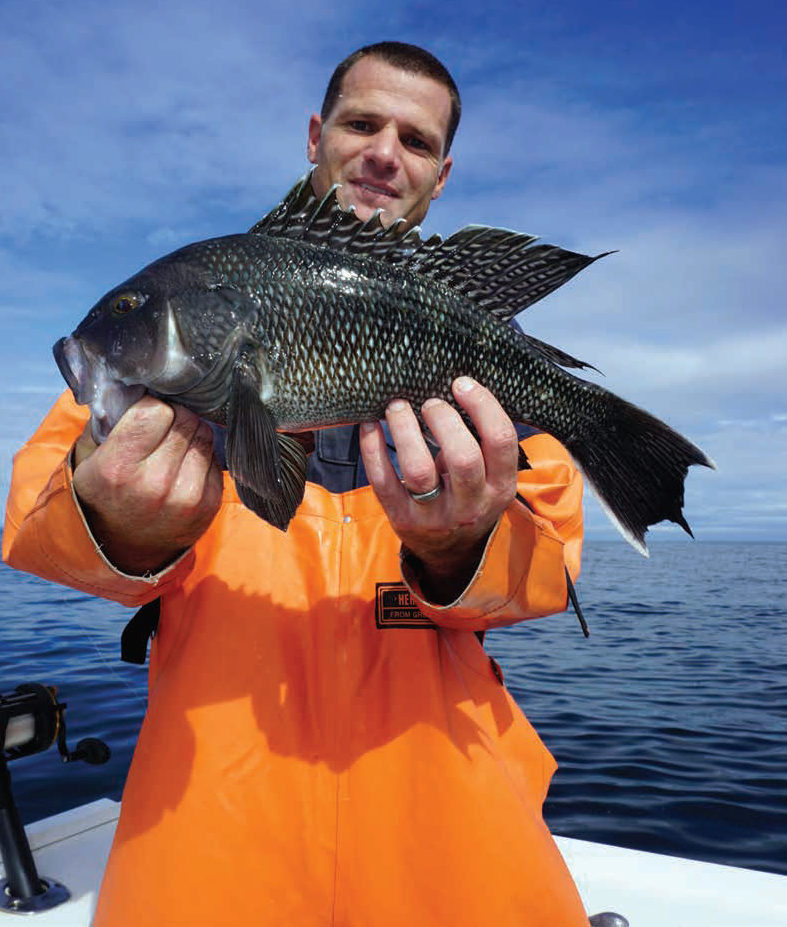
For the past few years, the coastal black sea bass fishery in New Jersey and Delaware hasn’t opened up until the middle of May. As each state staggers seasons to compensate for overlaps in other fisheries – like the start and end of summer flounder or the arrival of migratory striped bass – keeping track of the open days and size limits has been next to impossible without an advanced degree in statistics.
Adding to the complexity of seasons, sizes and bag limits is the actual science and statistical data. It’s been years for example since a winter fishery in January and February has been allowed, and while many anglers claim to be “tripping over sea bass” wherever and whatever they fish, regulators have been stubborn with the quota increases.
When the Mid Atlantic Fishery Management Council’s (Council) Scientific and Statistical Committee (SSC) met on January 25, they released some rather staggering new numbers. As per the latest stock assessment, the spawning stock biomass of black sea bass was estimated to be 48.9 million pounds, roughly 2.3 times higher (or 130 percent greater) than the 21.3-million pound target. So yes, the population is in good shape, which isn’t exactly a surprise to anyone.
But while the latest assessment information is now more in line with the so-called “anecdotal” data experienced by anglers “tripping” over sea bass, the topsy-turvy trends in the sea bass data could certainly be improved with better science and data collection; perhaps with help from hook & line fishermen!
Structured Analysis
Black sea bass associate with structure, which means data collected using bottom trawl gear alone may not be appropriate for gathering superior population estimates (Trawl gear can only get so close to structure before it becomes entangled and rendered useless.). To complicate the issue further, recent genetic research provides evidence of two population segments for black sea bass along the Atlantic Coast, with a break point considered around Cape Hatteras, NC.
In cooperation with Jersey Coast Anglers Association, the New Jersey Federation of Sportsmen’s Clubs, Recreational Fishing Alliance (RFA), Rhode Island Party and Charter Boat Association and the National Marine Fisheries Service (NMFS), Dr. Eleanor A. Bochenek and her team from Rutgers University’s Fisheries Cooperative Center and Haskin Shellfish Research Laboratory in Cape May are looking at an alternative approach to assessing the black sea bass stock through hook and line fishing to perform the very basics that trawl surveys cannot accomplish.
I have to admit that I was feeling a bit guilty climbing aboard Capt. Adam Nowalsky’s Karen Ann II charters out of Snug Harbor at Kammerman’s Marina in Atlantic City. It was October 21, a day before the official start of the 2016 fall/winter black sea bass season in New Jersey, and here I was heading out with the Rutgers University team to fish for black sea bass. Respectfully, I left the cooler in the truck, a good thing too because no take home biscuits, regardless of the reasons for the trip.
Other than the Grunden’s to handle rainy conditions, there was also no need for my own equipment; Dr. Bochenek and her team had that already accounted for in their approved project, specifically a Hook and Line Survey to Assess Spatial Population Dynamics of Black Sea Bass. My responsibility, along with my friend John Depersenaire at the RFA was specifically to support the scientists as a volunteer angler to fish for black sea bass on the trips.
“Hey Jim, we need your help catching fish for our survey.” God, I love science!
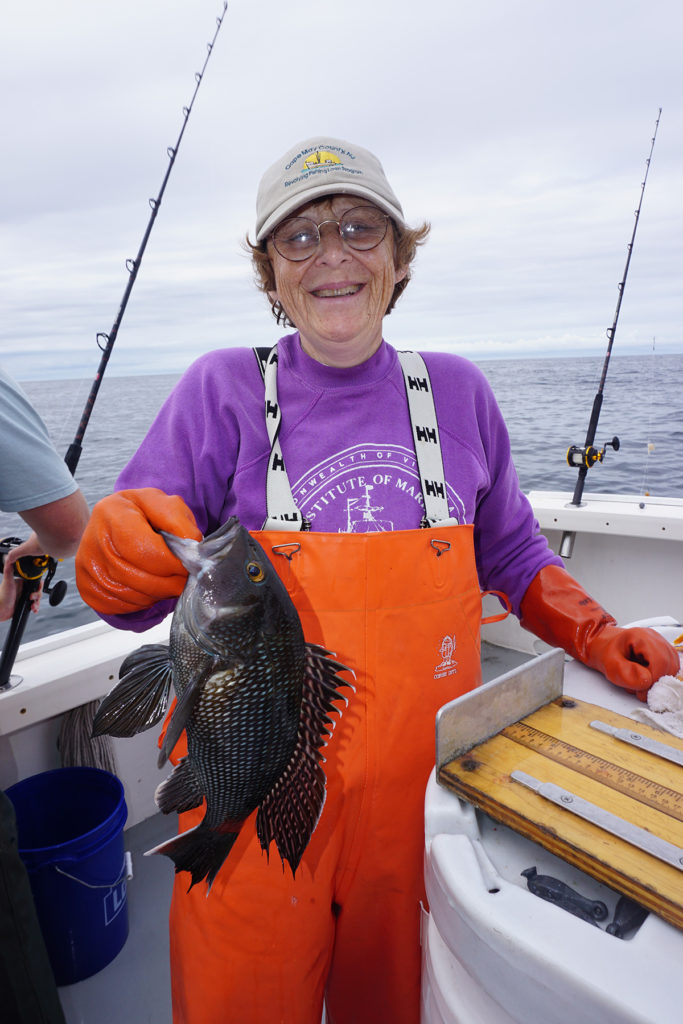
A Hook & Line Approach
Identical rod and reel combinations were used, each fitted with the same top/bottom rig and a sinker appropriate for conditions. Each rig consisted of a loop at the bottom for the sinker, a drop loop for a hook 4 inches above the sinker, and an additional drop for a hook 10 inches above the first. We used two different hook types, the first a Gamakatsu size 2/0 circle octopus hook; two of the PENN rod and reel outfits were rigged with these hooks. The second was a size 2/0 Mustad j-hook and the other two PENN outfits rigged with these hooks.
At the very first drop somewhere amidst the Atlantic City Reef structure, we baited each of the five rigs with clam and awaited Dr. Bochenek’s instructions. Two outfits at the starboard side were dropped for five minutes with circle hooks untouched, one was placed in a midship rodholder on the port side for two minutes, while Depersenaire and I managed two other port side outfits baited with high-low rigs.
The instructions were very specific; at each of several locations, we would manage the outfits until a fish was on; once reeled to the surface, the sea bass would be placed in buckets, registered in a logbook, and analyzed by Dr. Bochenek and fellow researcher Jason Morson for size and sex. When rigs were pulled up, those outfits were stowed until the end of the time series, whether there was a fish on or not.
At the two-minute mark, the other port-side rod was reeled in with any fish caught registered by the scientists, and finally the other two outfits with the circle hooks at the end of the 5-minute timeframe. Fish were lost here and there based on inattentiveness to the dancing of the rod tip, but that was all part of the scientific process. Each rod and reel was timed independently using an electronic digital timer, with additional line with a hobo logger attached near a sinker dropped down to within a few feet of the bottom to measure water temperature and depth.
All caught fish, which included a few bluefish as well, were worked up by the science crew and the appropriate information was recorded in a log including the reef location, drop number, and gear type. All fish were measured and sex was also determined for sea bass; any fish that could not be sexed using non-invasive methods was dissected in the field to determine the sex. Scales samples were also collected with information for further research in the lab. After any hour of fishing at one given reef location, Capt. Nowalsky would pull anchor and move to a new location for representative sampling. Even when the bite was hot and heavy, science dictated that we move from spot to spot after a certain number of drops were made at any given location; sex and length of every sea bass at each individual outfit was determined onboard, with some of the fish brought back to the lab for further analysis. Scales were also collected from a subset of black sea bass taken during the day. At each new drop, Dr. Bochenek would also record into the reef log the latitude, longitude, depth, and time.
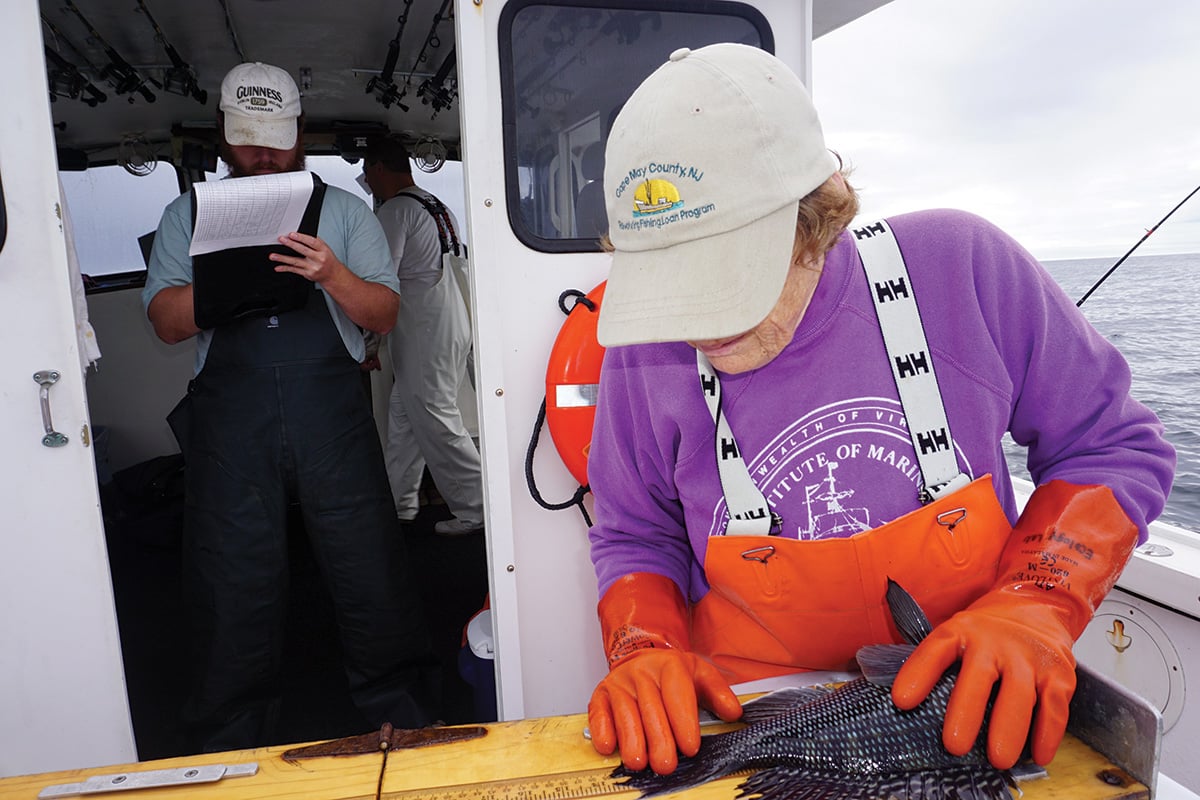
Cooperative Research
As far as fishing out of season, the scientists were awarded a federal exempted fishing permit to allow the hook and line survey to occur in federal waters in the time that the recreational black sea bass fishery was closed. At the conclusion of the two-year study – paid for in part through the federal Saltonstall-Kennedy (SK) program, a fund used by the Commerce Department to provide grants or cooperative agreements for fisheries research and development projects addressing aspects of U.S. fisheries – the results will hopefully provide a new way of assessing structure-dwelling species like black sea bass at reef sites where trawl surveys are unable to provide sample.
“It is essential for the recreational fishing industry to become more involved in cooperative research and to play an active role in contributing to a research project that will provide data directly to the stock assessment,” Dr. Bochenek said in the proposal. “In the past, the marine recreational fishing industry has not been actively involved in collecting scientific data especially data that will benefit the stock assessment.”
The work has not been without a couple of coastal hitches. “While we made every effort to find a captain that would be agreeable to anchoring over a reef, in North Carolina this proved difficult, Dr. Bochenek noted, explaining how captains there don’t have the gear to support anchoring on a reef, nor the desire to anchor, given their normal drift fishing practices for sea bass. “For this reason, in North Carolina, the captain stayed as close to a single fishing location as possible using the vessel’s engine,” she noted. It’s similar in Rhode Island where captains explain how structure is spread out along the bottom, and that normal fishing practice is to drift.
“The captains in Rhode Island were at least agreeable to anchoring, however, they also requested that we make one ten-minute drift at each reef once we completed all standardized and unstandardized fishing that we could later compare to the standardized fishing method,” she said, adding that a single 10-minute drift was also logged at each reef that used what was an “unstandardized approach,” with each angler allowed to catch fish, rebait, and continue fishing using their own bait and tackle while drifting.
The concept is that a lot can be learned from recreational fishermen and the sportfishing industry through our method of fishing with rod and reel. But as I joked to Depersenaire on about the 20th drop of the day, “catch-and-release sea bass fishing sucks.” He laughed and reminded me of that very fact when guys are fishing for cod, pollock, ling and porgies on the structure in January and February and can’t get away from the sea bass; and that’s probably the most frustrating part of all.
| NJ/DE REGULATIONS: SEASON, SIZE & BAG |
|---|
|
DELAWARE: 12-1/2 inches minimum size, open May 15-September 21 (15 fish) and October–December 31 (15 fish). NEW JERSEY: 12-1/2 inches minimum size, open May 26-June 18, July 1-August 31 and October 22- December 31 (15 fish) NEW YORK: 15 inches minimum size; June 27-August 31 (three fish), September 1 -October 31 (eight fish), and November 1 to December 31 (10 fish). |
